Did you know that the average home can harbor up to 40 pounds of dust in its air ducts each year? If you’re feeling uneasy about the air you breathe indoors, there’s good news: proper duct cleaning can transform your home’s air quality—fast. This complete guide reveals how you can address duct cleaning issues within 24 hours or less, securing fresher, healthier air in record time.

What You’ll Learn
- Why duct cleaning is crucial for healthy, comfortable indoor air
- How to identify the signs that demand immediate air duct cleaning
- Step-by-step breakdown of professional duct cleaning service
- The cost, frequency, and effectiveness of certified vs. DIY approaches
- Top tips for efficient, same-day duct cleaning solutions
- Expert answers to the most common air duct cleaning questions
Transform Your Indoor Air Quality Fast: Surprising Facts About Duct Cleaning
- Did you know that up to 40 pounds of dust can collect in the average home’s air ducts each year? Discover how duct cleaning can dramatically improve your indoor air quality and comfort in just one day.
Every time your heating and cooling system runs, it circulates air—and airborne debris—through your duct system . Over months and years, layers of dirt and dust , allergens, pet hair, and even mold spores can accumulate inside the air duct network. Studies show families spend 90% of their time indoors, making indoor air quality crucial for health and comfort.
A quick and thorough air duct cleaning can eliminate these contaminants within 24 hours. The result? Cleaner air, less dust piling up on surfaces, reduced allergy symptoms, smoother air flow , and even lower energy bills. Prioritizing duct cleaning doesn’t just freshen the air—it safeguards your home’s comfort and your family’s health, all with a same-day turnaround .
How Duct Cleaning Impacts Indoor Air Quality and Health
When we talk about the impact of duct cleaning , we’re really talking about a dramatic upgrade to your indoor air quality . Your home’s heating and cooling system relies on a network of air ducts that move air throughout every room. If left unchecked, these ducts can quietly become a source of dust, allergens, and even dangerous biological contaminants. Regular cleaning ser—including professional air duct cleaning service —removes these health threats and improves how your HVAC system functions.
A freshly cleaned duct system dramatically reduces airborne particles that can trigger allergies and asthma. Even residents without allergies report sharper mental clarity, less household dust, and a long-lasting sense of cleanliness. The difference is especially noticeable if you have pets, smokers in the home, or if you’ve done recent renovations. Duct cleaning service can transform both the quality and comfort of your indoor environment—often overnight.
Understanding the Role of Air Ducts in Your HVAC System
Your air ducts are like the lungs of your home’s heating and cooling system . They move heated or cooled air throughout the house, maintaining consistent temperatures and controlling humidity. However, over time, their inner surfaces collect dust, pet dander, pollen, and sometimes even mold. If left unattended, these substances recirculate via your hvac system , impacting air quality and energy efficiency.
A clog or buildup in your duct system can force the cooling system to work harder than necessary. This not only raises energy costs but can reduce system lifespan. Periodic duct cleaning ensures the path is clear, optimizing airflow and maintaining the central role of the system: delivering healthy, comfortable, and clean air throughout your home.
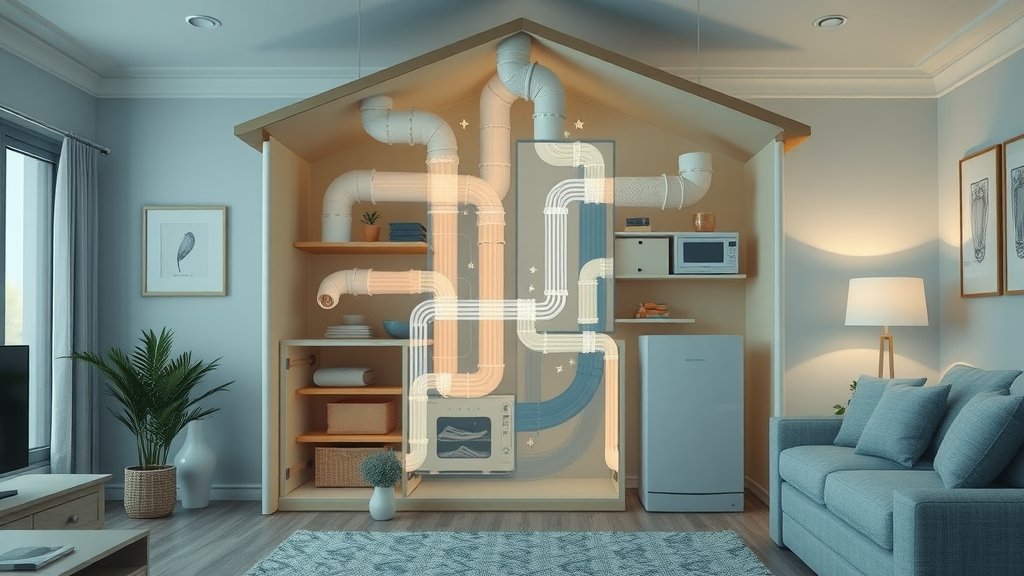
Biological Contaminants: Identifying Hidden Dangers Within Air Ducts
Hidden within the recesses of your air duct system may lurk biological contaminants like mold spores, bacteria, and even tiny pests. Moisture intrusion or fluctuating humidity can create an environment inside ductwork that fosters growth. Once those spores become airborne, they are distributed into every room by your hvac system , where you and your family breathe them in.
Regular duct cleaning targets these hidden dangers. A certified duct cleaner will identify, remove, and treat affected areas, helping prevent respiratory issues and persistent illnesses. By relying on duct cleaning service that follows national air duct cleaners association standards, you ensure the hidden threats in your airways are truly evicted, not just temporarily masked.
Connection Between Duct Cleaning and Allergies
If you or your loved ones suffer from allergies or asthma, dirty air ducts can intensify symptoms. Dust mites, pollen, pet dander, and mold accumulate in ducts, only to be recirculated with every cycle of the heating and cooling system . The result? Increased sneezing, coughing, watery eyes, and other symptoms whenever your HVAC kicks on.
Professional air duct cleaning service can break this cycle almost immediately. By removing allergens and biological contaminants from your duct system , you enhance air purity. Many allergy sufferers report rapid relief after a comprehensive duct cleaning , making it one of the most effective steps for managing indoor air quality .
"Proper duct cleaning can reduce airborne contaminants and lower the risks linked to poor indoor air quality." – National Air Duct Cleaners Association
Signs You Need Duct Cleaning Service Now
- Key indicators include persistent dust, odd odors, worsening allergies, uneven air flow, and rising energy bills.
Knowing when to schedule a duct cleaning service can make all the difference in home comfort and health. If you notice dusty vents or find that surfaces get dirty soon after cleaning, it may signal significant buildup inside your ducts. Unpleasant, musty odors that worsen when the HVAC system operates also suggest possible mold or pest infestation.
Increased allergy symptoms, headaches, or sinus problems—especially after starting the heating and cooling system —are warnings that the air in your home is not as healthy as it should be. Uneven airflow, rooms that feel stuffy, and higher-than-normal energy bills can all result from blockages or leaks in the duct system that only proper duct cleaning can resolve.
| Common Problems | Possible Cause | Solution |
|---|---|---|
| Dusty vents | Dirty air ducts | Professional duct cleaning |
| Mold growth | Moisture in ducts | Cleaning and leak repair |
| Unpleasant odor | Debris or infestations | Full duct cleaning service |
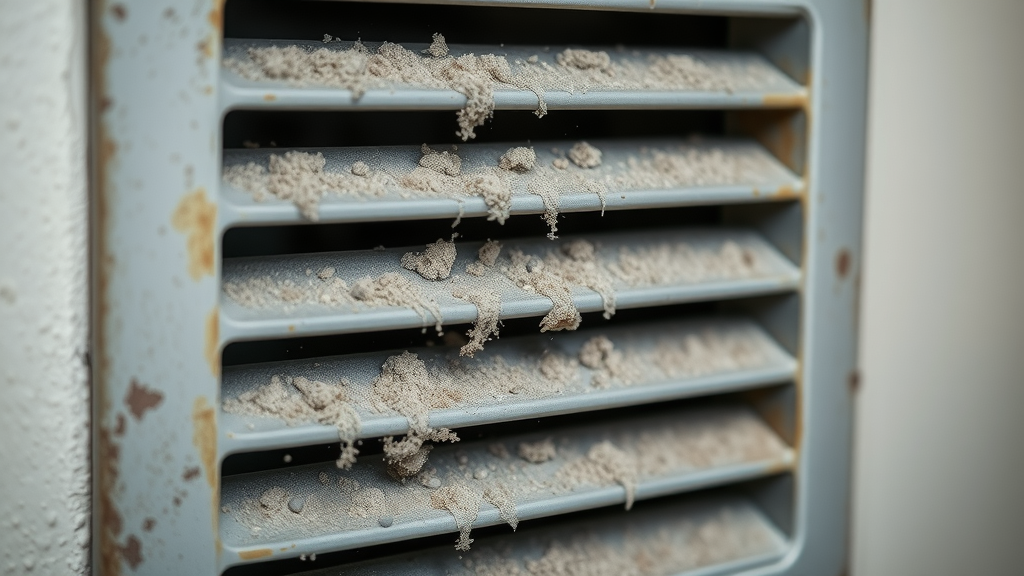
Understanding the Professional Duct Cleaning Process
Investing in a professional duct cleaning service ensures that not only are visible contaminants removed, but hidden dangers are thoroughly addressed. Certified air duct cleaners use specialized equipment and proven methodologies that go well beyond what simple household vacuums can achieve. A professional service restores true cleanliness from deep inside your air duct system, setting a fresh baseline for healthier indoor living.
The cleaning process often includes a thorough inspection, use of powerful vacuums and rotary brushes, and may even involve antimicrobial treatments if mold or bacteria are detected. Reputable companies, especially those certified by the National Air Duct Cleaners Association (NADCA) , follow industry best practices designed to safeguard both your property and your air quality—delivering comfort, confidence, and peace of mind.
Step-By-Step Air Duct Cleaning Service Guide
A comprehensive air duct cleaning service typically follows these critical steps. First, technicians will assess your heating and cooling system for any visible buildup or blockages. They will carefully protect floors and furniture before accessing vents and major duct trunk lines. Using high-powered rotary brushes and industrial-strength vacuums, every square inch of your duct system is systematically cleaned.
Dirt, dust, mold spores, and allergens are all extracted into sealed containment units to avoid contaminating your home’s air. The duct cleaner may apply EPA-approved antimicrobial treatments if necessary. Finally, after a second inspection, all vents and system components are reassembled and tested. The whole process is usually complete within a few hours, delivering an immediate improvement in indoor air quality .
What to Expect: Tools, Techniques, and Duct Cleaners at Work
Professional air duct cleaners arrive equipped with advanced tools: flexible rotary brushes, high-CFM vacuums (often truck-mounted), compressed air whips, inspection cameras, and HEPA filtration units to capture the smallest particulates. The team’s expertise means they can adapt to every twist and turn in your ductwork, ensuring no spot is missed.
Expect a rundown of the process before work begins—including what rooms will be accessed and any preparatory steps needed. The team will work methodically and efficiently, minimizing disruption and dust escape. Experience, equipment, and strict attention to standards set by bodies like the national air duct cleaners association make all the difference. You’re not just paying for a cleaning—you’re investing in a safer, more efficient home.

Ensuring a Thorough Cleaning: National Air Duct Cleaners Association Standards
When choosing an air duct cleaning service , look for companies adhering to the strict guidelines of the National Air Duct Cleaners Association (NADCA) . Their standards cover every aspect of the process, including safety procedures, equipment calibration, and post-cleaning customer checks. A NADCA-certified duct cleaner guarantees that contaminants are not just loosened, but fully removed from the ductwork.
NADCA standards ensure your home receives a comprehensive clean—reducing future dust accumulation, maintaining optimal air quality , and avoiding accidental damage to the hvac system . Their member companies undergo regular audits and ongoing education, so you’re assured of best-in-class service supported by the latest knowledge and techniques.
Choosing the Right Duct Cleaning Service for Your Home
Not all air duct cleaning services are created equal. The difference between a satisfying result and disappointment is the provider’s credentials and methods. Prioritizing a qualified, experienced, and well-reviewed duct cleaning service ensures that you get real improvements to your indoor air quality and avoid unnecessary costs or damage.
Certification, insurance, and a transparent cleaning process should be your baseline requirements. Look for membership in reputable organizations—such as the National Air Duct Cleaners Association —and always ask for references and before-and-after photos. With the right partner, you’ll see (and breathe) the difference within a single day.
Qualifications to Look For in Air Duct Cleaning Service Providers
Before hiring an air duct cleaner , verify their credentials. NADCA certification proves adherence to national best practices and advanced knowledge of HVAC systems and contaminants. Insurance protects you from liability in case of property damage. Years of experience, ongoing staff training, and clear, honest communication all signal a reputable cleaning service .
Top-notch duct cleaning companies will willingly share their certifications, insurance, and documentation from cleaners association directories. They should also provide up-front pricing estimates and answer questions about their cleaning process and equipment. A team that is diligent with documentation is likely to be just as thorough when cleaning your home’s airways.

Questions to Ask Before Hiring Air Duct Cleaners
- Checklist: Licensing and insurance, NADCA membership, experience, explained cleaning process, customer reviews
A few key questions can quickly separate professional air duct cleaners from unreliable companies:
- Are you licensed, insured, and NADCA-certified?
- How long have you provided air duct cleaning services ?
- What methods and equipment will you use in my home?
- Can you explain your cleaning process step by step?
- Do you have before and after photos or references from satisfied clients?
Comparing DIY vs. Professional Duct Cleaning: Pros and Cons
You might wonder if a hardware store vacuum and a flexible brush can match a professional duct cleaning service . While DIY duct cleaning can remove some visible debris (and may suffice for lightly used systems), there are significant risks—and limitations—that make certified professionals worth considering for most homes.
DIY jobs often lack the power, reach, and filtration to thoroughly clean your duct system . Professional air duct cleaning service does more than vacuum: it identifies hidden hazards, treats biological contaminants, and protects your hvac system components from accidental damage. Choosing the right method comes down to the scope of your needs, your home’s layout, and your family’s health priorities.
When DIY Duct Cleaning Makes Sense
If your air ducts are easily accessible and you only notice a minor accumulation of dust at the vent grates, a careful DIY cleaning can help maintain light cleanliness between professional services. Changing air filters regularly and vacuuming vent openings may reduce surface debris and slightly improve immediate air flow.
DIY methods are cost-effective and provide fast results for cosmetic concerns. However, it’s essential to recognize that even the most thorough home vacuum won’t reach deep inside your duct system or remove microbial growth. For more than light maintenance, or when dealing with odd odors or allergy flare-ups, stick with an experienced air duct cleaning service .
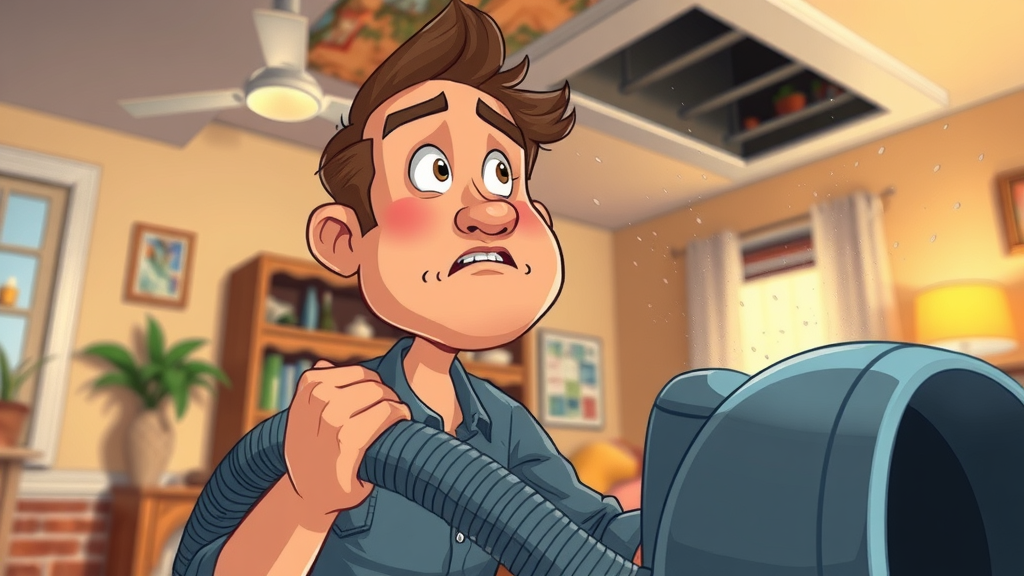
Risks and Limitations of DIY Approaches
Attempting a full cleaning process with household vacuums and basic tools may not address deep-seated dust, debris, or biological contaminants . There’s also a risk of breaking seals, damaging delicate hvac system parts, or inadvertently dislodging more dust into your living space.
Inadequate cleaning can even worsen indoor air quality , circulate irritants, and lead to costly duct system repairs. For most homeowners, DIY should be reserved for light maintenance, while complex or overdue cleaning is best left to certified air duct cleaners who guarantee their results.
Benefits of Certified Professional Duct Cleaning
Opting for professional duct cleaning service delivers quantifiable benefits. Certified technicians have the expertise to spot mold, leaks, and insulation issues—preventing air leaks and energy losses. High-powered equipment, coupled with advanced filtration, removes even microscopic particles, restoring airflow and minimizing allergens.
Only a qualified air duct cleaning service can ensure your home’s system is healthy from the inside out. With a same-day service, the improvement in your home’s air quality, comfort, and HVAC efficiency is practically immediate—a worthwhile investment in your property’s well-being.
How Often Should Air Ducts Be Cleaned?
A common question: How often do you actually need your air ducts cleaned ? The answer depends on several key variables—such as the presence of pets, allergy sufferers, or smokers in the home, as well as local air quality and recent construction or renovation activities. According to industry experts, most homeowners should have a professional air duct cleaning service every 3-5 years, with more frequent service for homes with special circumstances.
Sticking to a maintenance schedule tailored to your family’s needs ensures peak indoor air quality , maximum HVAC efficiency, and lower long-term cleaning costs. Regular checkups can also catch problems—like leaks or mold—early, avoiding both health issues and emergency repairs.
Factors That Determine Cleaning Frequency
Several factors influence how often you should schedule a professional air duct cleaning . Pet owners, for example, will need more frequent cleaning due to constant shedding. Allergy sufferers or asthmatics benefit from annual cleanings, while households with no special risk factors can extend the interval.
Other considerations include living in areas with high pollen counts or air pollution, having infants or elderly residents, and experiencing recent water damage. Staying aware of these variables helps homeowners prioritize timely duct cleaning to maintain healthy indoor air quality .
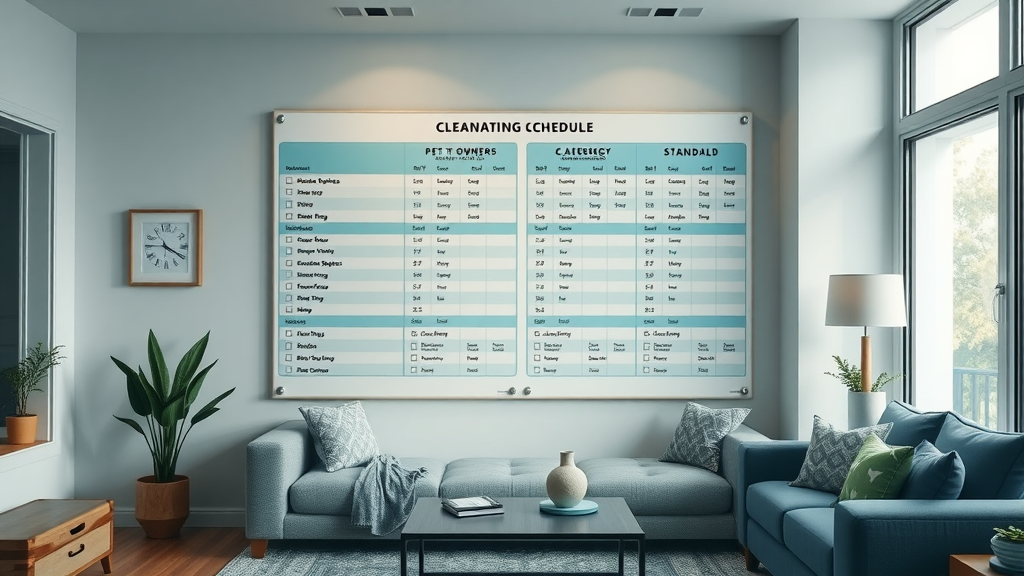
Maintenance Tips to Extend Results of Duct Cleaning Service
The benefits of duct cleaning service last longest with a few simple maintenance steps:
- Replace HVAC filters every 1-3 months, or as recommended by your system
- Keep vents and returns free from blockages (move furniture or rugs away)
- Address water leaks immediately to prevent mold
- Vacuum and dust your home regularly to minimize airborne debris
- Schedule annual system checkups, even if your air duct cleaning schedule is less frequent
| Home Factors | Recommended Frequency |
|---|---|
| Pet Owners | Every 2 years |
| Allergy sufferers | Annually |
| Standard household | Every 3–5 years |
Cost of Duct Cleaning: What to Expect
Budgeting for air duct cleaning means understanding the scope and variables affecting price. Standard duct cleaning service for an average-sized home usually ranges from $300 – $500 . More comprehensive cleanings, including deep sanitization or antimicrobial treatments, may cost from $500 – $1,000 . Homes with multiple HVAC systems, long or difficult-to-access ductwork, or severe contamination will pay at the higher end of the scale.
Always confirm if quoted prices are per HVAC unit or for the entire home system, and ask for a full written estimate. Factor in your family’s health, HVAC system efficiency, and potential for energy savings—not just the upfront expense—when determining value.
| Service Type | Average Cost Range |
|---|---|
| Standard air duct cleaning | $300–$500 |
| Comprehensive duct cleaning service | $500–$1,000 |
| Antimicrobial treatment | $150–$300 |

Is Duct Cleaning Worth the Cost?
Regular air duct cleaning is an investment that pays off with enhanced home comfort, improved air quality, lower utility costs, and reduced risk of HVAC breakdowns. For homes with allergy sufferers, pets, or recent mold issues, the benefits compound even further—offering peace of mind and healthier living spaces. Knowing your system is free of hidden contaminants justifies every dollar spent.
"Consistent duct cleaning service can create long-term energy savings and health benefits for homeowners."
Frequently Asked Questions About Duct Cleaning
What is the average cost for air duct cleaning?
The average air duct cleaning cost typically ranges from $300 to $500 for most single-family homes. More complex jobs—such as those requiring antimicrobial treatment or servicing larger properties—can run up to $1,000 or more. Always request a written estimate specifying the scope of work.
Is it worth it to do duct cleaning?
If your home shows signs of heavy dust, musty odors, or increased allergy symptoms, air duct cleaning is a smart, worthwhile investment. It not only improves indoor air quality but can also boost energy efficiency and extend your hvac system’s lifespan—all contributing to better comfort and cost savings.
Do you actually need to get your ducts cleaned?
While some light dustiness is normal, ducts should be cleaned if you observe visible mold, excessive dust, evidence of pests, or unexplained illness symptoms. Homes with pets, recent renovations, or high allergy risks benefit most from regular duct cleaning service .
Top Tips to Get Your Air Ducts Cleaned in 24 Hours or Less
- 1. Contact a certified local air duct cleaning service early in the day
- 2. Prepare your home by moving furniture away from vents
- 3. Confirm equipment and team size with provider for efficient service
- 4. Request same-day or expedited services if available
When you need a duct cleaning service fast, these tips can help you secure a same-day or next-day appointment. Be proactive: reputable companies can often accommodate urgent bookings if called early. Preparing your home—clearing access to vents and informing family members—streamlines the process, allowing for a fast, effective clean and immediate improvement in indoor air quality .
Your Complete Duct Cleaning Action Plan: Healthy Air Starts Now
- • Assess the signs your home needs duct cleaning
- • Choose certified duct cleaning professionals
- • Schedule your service for a 24-hour turnaround
- • Maintain air quality with regular system checks

"Take control of your indoor environment today – breathe easier by prioritizing expert duct cleaning."
Essential Resources and Associations for Air Duct Cleaning
- • National Air Duct Cleaners Association (NADCA)
- • EPA Indoor Air Quality Guidelines
- • Local duct cleaners association directories

Additional FAQs: Expert Answers About Duct Cleaning Service
- • How long does duct cleaning take?
- • Does duct cleaning improve HVAC efficiency?
- • Can duct cleaning reduce energy costs?
- • What are the biggest myths about air duct cleaning?
A typical duct cleaning service takes 2-5 hours depending on home size and system complexity. Yes, duct cleaning improves HVAC efficiency and reduces energy costs by removing obstructions and allowing air to flow freely. Common myths include the belief that duct cleaning is only cosmetic or only necessary for older homes—both are false, as all systems accumulate contaminants over time.

Next Steps: Secure Professional Duct Cleaning for a Healthier Home Today
- Don’t wait to enjoy better indoor air! Contact a certified air duct cleaning service now for a same-day or next-day appointment and experience the difference within 24 hours.
Act now : Schedule your duct cleaning, prepare your home, and breathe easier—fresher air is just hours away!
To further enhance your understanding of air duct cleaning and its impact on indoor air quality, consider exploring the following resources:
-
The U.S. Environmental Protection Agency’s article, “Should You Have the Air Ducts in Your Home Cleaned?” , provides insights into when duct cleaning is necessary and its potential benefits.
-
HGTV’s guide, “All About Air Duct Cleaning | Should You Clean Your Air Ducts?” , offers practical advice on maintaining your HVAC system and recognizing signs that professional cleaning may be needed.
These resources will equip you with the knowledge to make informed decisions about maintaining your home’s air quality and HVAC efficiency.
 Add Row
Add Row  Add
Add 


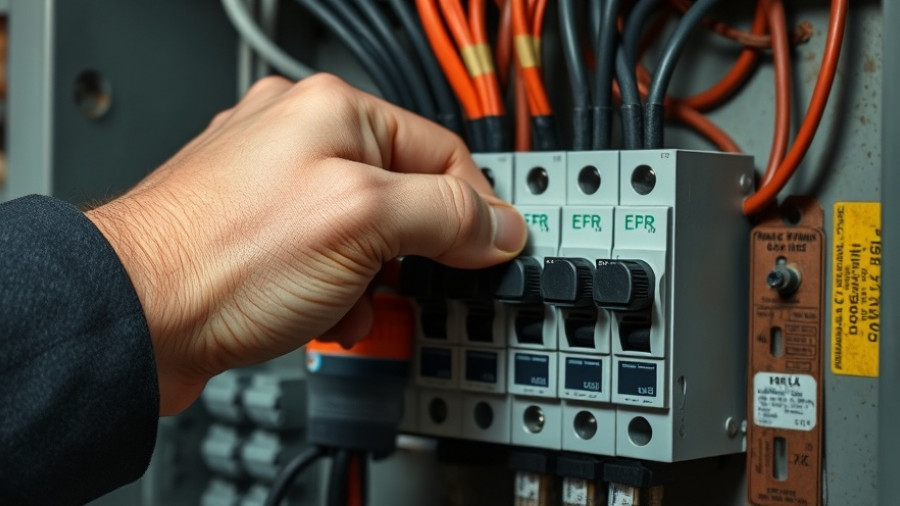

Write A Comment